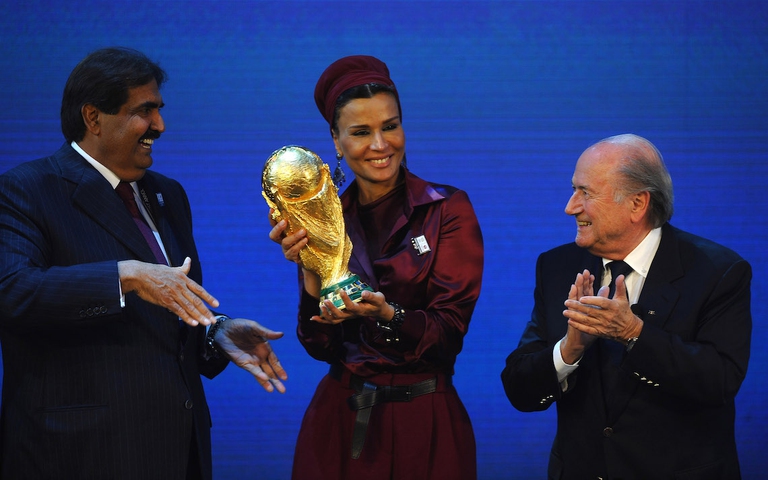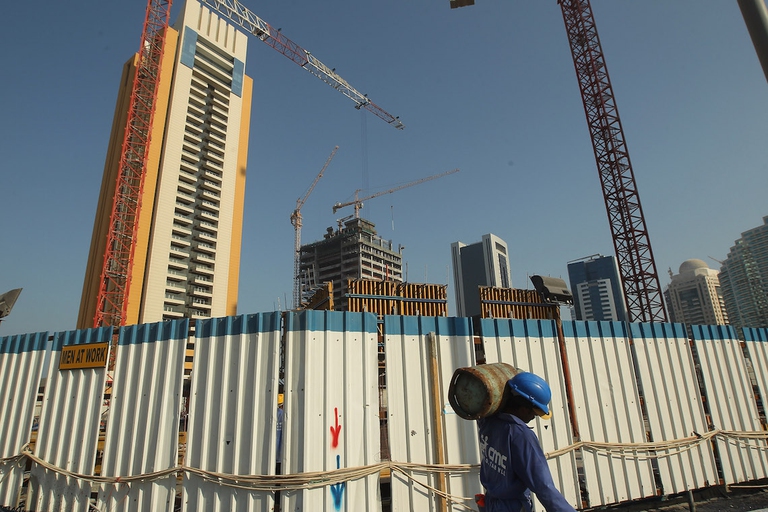
As per tradition after 12 years India held Mahakumbh, the world’s largest spiritual congregation that has been attracting pilgrims from across the globe.
In 2010 Qatar beat the United States in the bid to host one of the biggest sporting events of the next decade, the 2022 World Cup, in a process many say was riddled with corruption. Another, perhaps darker scandal relates to the human rights violations taking place on Qatari construction sites. Whilst the small oil-rich
In 2010 Qatar beat the United States in the bid to host one of the biggest sporting events of the next decade, the 2022 World Cup, in a process many say was riddled with corruption. Another, perhaps darker scandal relates to the human rights violations taking place on Qatari construction sites. Whilst the small oil-rich nation has the world’s highest GDP per capita, the millions of migrants building World Cup infrastructure work and live in undignified conditions, trapped in a system known as kafala that has been likened to slave labour.
Qatar has a population of two million, of which 85% are migrants, principally from India, Nepal, Bangladesh, Sri Lanka and the Philippines. This makes it the country with the highest number of migrants per capita in the world. The government believes that 500,000 extra workers will be needed to build $140 billion in infrastructure for the World Cup.
Migrants make up the vast majority of those employed in construction and domestic work in Qatar, and are allowed to work in this and other Arab Gulf states only if backed by a sponsor, or kafeel. This is the kafala system that binds employees to employers so tightly that workers aren’t allowed to leave the country or change jobs without their kafeel’s permission.
FIFA, the international football governing body and organiser of the World Cup, has publicly condemned working conditions in Qatar, and so have tournament sponsors Visa and Coca-Cola. Leading human rights organisations Human Rights Watch (HRW) and Amnesty International have described the kafala system as forced labour and pointed to the Qatari government’s unsatisfactory efforts in safeguarding workers’ rights. In a 2013 report Amnesty revealed that many employers deprive workers of their passports once they enter Qatar, whilst a 2012 HRW investigation found that more than a third of workers weren’t regularly paid.
Construction labourers toil long hours under the blazing heat of the Arabian Desert and many live in squalid dormitories. These are such an embarrassment for the government that in May the Qatari authorities arrested a BBC journalist, invited to visit one of the new labour camps being built, for venturing into one of the older living quarters. The labourers can’t protest these conditions: Qatari law prohibits them from forming trade unions and, as pointed out by the International Trade Union Confederation (ITUC) in a 2014 report, they don’t have adequate access to the justice system.
https://youtu.be/qSuajKyAEwQ
These issues gained renewed attention after architect Zaha Hadid, who designed the Qatar World Cup Al-Wakrah stadium, walked out of a BBC interview in September when her interviewer brought up the issue of worker deaths on the stadium’s site. Whilst the interviewer took it for granted that such deaths had occurred, Hadid held the opposite view.
It is difficult to quantify how many workers have lost their lives on building sites in Qatar and whether these incidents are related to the World Cup given that the government doesn’t disclose such information. In 2014 the ITUC estimated that 1,200 migrant workers had died in the country since it was awarded the World Cup. It is unclear how these people lost their lives and in what line of work, thus some say it is impossible to connect the casualties to the tournament. On the other hand, the ITUC points out that the infrastructure programme in Qatar, which includes subways, hotels, an airport, roads, twenty skycrapers, sports facilities and even a new city, is entirely structured around the World Cup delivery date.
Though Hadid may be right in saying that no workers have died on her site, the fact that we don’t know how many migrants have lost their lives and why is problematic. The burden falls on the Qatari government as well as FIFA, who can’t stand by passively in the face of evidence of labour exploitation, as pointed out by Amnesty. Evidently, the glitz of the World Cup is so blinding that the show must go on even in the face such dark revelations.
Siamo anche su WhatsApp. Segui il canale ufficiale LifeGate per restare aggiornata, aggiornato sulle ultime notizie e sulle nostre attività.
![]()
Quest'opera è distribuita con Licenza Creative Commons Attribuzione - Non commerciale - Non opere derivate 4.0 Internazionale.
As per tradition after 12 years India held Mahakumbh, the world’s largest spiritual congregation that has been attracting pilgrims from across the globe.
Workers in tea gardens of West Bengal, India, that produces Ctc tea for domestic consumption complain that they have been devoid of basic facilities while political parties make hollow promises during every elections which are never fulfilled.
India is in the middle of the elections, but sadly none of the politicians have uttered a word on man-animal conflict that has been devouring several lives every year.
Manipur, a state in north-east India, is still reeling under the tremors of violence that broke out last year devouring lives and paralyzing the economy.
The government of Tanzania is currently planning to evict more than 80.000 indigenous Maasai people from their ancenstral land
A new UNU-INWEH report on the global bottled water industry reveals the massive scale of this market and the lack of strict quality controls.
Isatou Ceesay founded a social enterprise that is helping to fight plastic pollution and empowering women and young people to gain economic independence.
In 2020, Mihela Hladin made a radical decision that many, in recent times, have probably considered. This is her story, with photos by Matt Audiffret.
The Brazilian government has started evicting illegal gold miners, responsible for the health emergency that has hit the Yanomami people.









